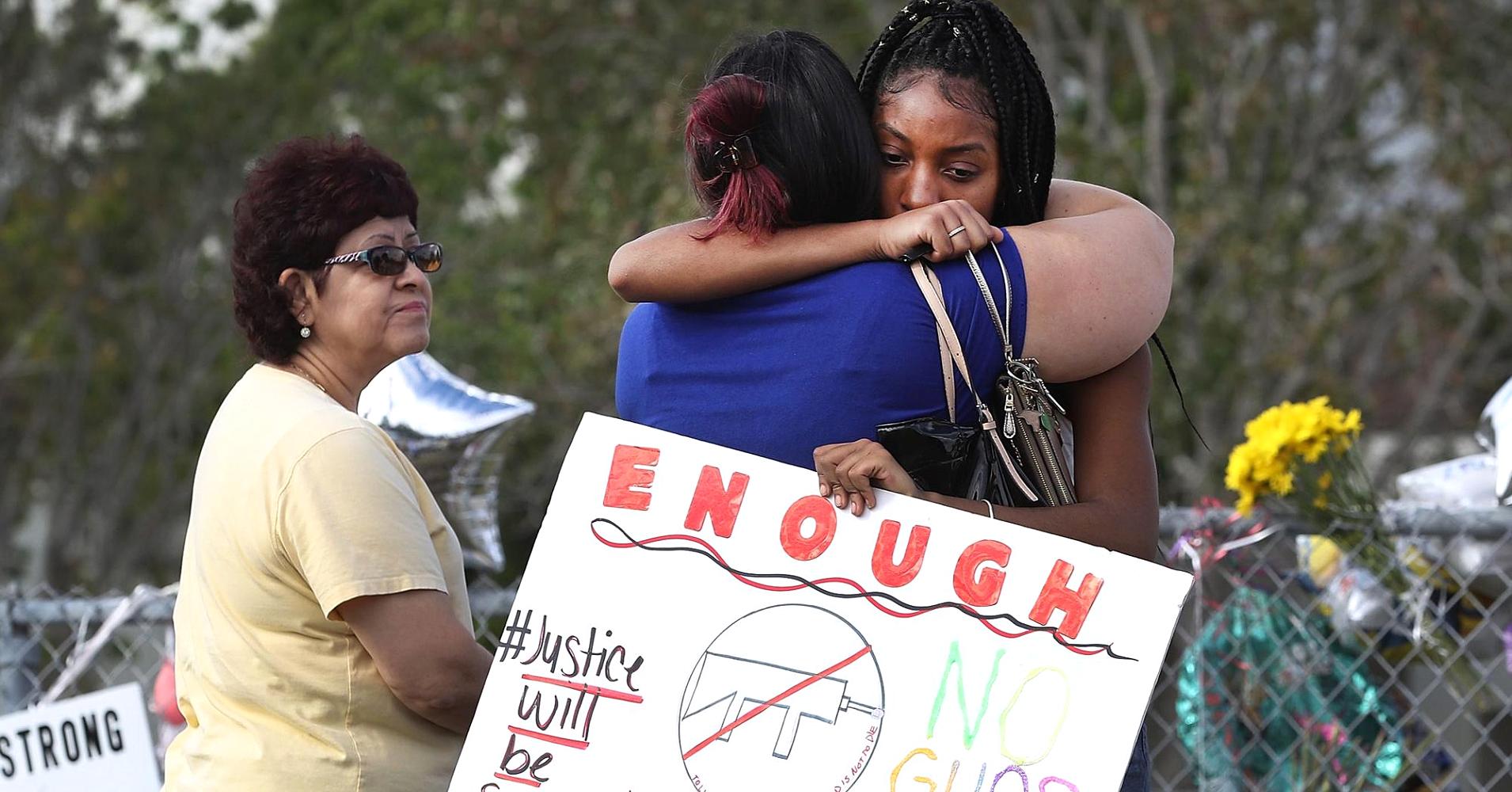
Yesenia Herrera, a first grade teacher in Boston, has undergone training that helps teachers assess when they should flee, lock down or try to fight back during an attack.
However, she said she does not think teachers should be armed, a subject that’s been hotly debated in the wake of the Parkland, Florida massacre. As part of his strategy to deter more school shootings, President Donald Trump has said he wants around 20 percent of the most “gun adept” teachers to be armed.
“I’m not a soldier,” Herrera told CNBC recently, a sentiment voiced by a number of teachers around the country who are nervous about having weapons in the classroom. “I can’t even imagine myself being a soldier . . . I picture myself getting my kids out of there or hidden.”
Yet Trump’s proposal is perhaps easier tweeted than done. Putting guns in the hands of teachers is a concept that’s widely opposed by educators like Herrera, and very costly to boot.
According to the National Center for Education Statistics, there are nearly 3.6 million teachers in America. That makes arming masses of teachers difficult at best – or as a Brookings Institution report put it recently, “entirely impractical” at worst.
Cost is just one reason why some analysts feel arming teachers isn’t feasible. Recently, Brookings analyst Michael Hansen put the price tag at an “extremely conservative” estimate of $650 million, or nearly $1,000 per teacher annually.
A key element is the training each teacher would need to wield a weapon. The price of getting a permit varies greatly from state to state, running as little as $10 in some states – or over $100 in others.
In a comprehensive analysis last month, The Washington Post found that under certain scenarios, training and arming U.S. teachers could cost as little as $43 million, or as much as $1 billion.
Regardless of the cost, a growing number of teachers appear uncomfortable with having guns in the classroom based on principle. In a recent survey, the National Education Association showed an overwhelming majority of educators oppose the idea.
“A teacher’s job as an educator is to nurture, uplift and inspire,” Tommy Chang, superintendent of Boston Public Schools, told CNBC in a recent interview. “The thought that teachers should be armed in order to ward off violence is utterly illogical and will result in making our students and teachers less safe.”
William Hayes, who used to work at New Mission High School in Boston and now is the principal at Mastery High School in Camden, New Jersey, said he got into education because he has a passion for young people.
He wanted to have an impact on the future leaders of this country, and that vision didn’t involve using a weapon.
“Teachers are already asked to do a lot,” Hayes told CNBC, raising concerns about where the funding would come from. “We play many roles . . . we are not equipped to provide teachers with guns.”
Trump’s suggestion mirrors a proposal pushed by the National Rifle Association (NRA). In 2013, the NRA issued a call to protect students by having armed personnel in schools, months after the massacre at Sandy Hook Elementary School in Newtown, Connecticut. In its report, the task force said armed guards in schools have “proven to be an important layer of security for prevention and response in the case of an active threat on a school campus.”
Yet even that would be a costly endeavor. A plan floated last month by former GOP House Speaker Newt Gingrich would place at least 6 armed guards in every school. However, that could cost anywhere between $63 billion and $84 billion, according to the Post’s analysis.
Jim Wallace, the executive director of the Gun Owners Action League of Massachusetts, the state’s affiliate of the NRA, told CNBC the issue is complicated. Wallace believes that the presence of armed staff might make a gunman think twice about an attack, or stop a mass shooter more quickly.
“They look for a place with no defense,” Wallace said. “If we can place doubt in their mind . . . that would stop them.” If only some teachers and administrators are comfortable with being armed, he wants to arm only those staff members.
“I’m never in favor of arming people who are not comfortable,” Wallace said. “That’s a bad idea.”
The concept has at least a few supporters, like Utah teacher Kasey Hansen. She recently told ABC News that she brings a gun to school, and supported the idea of arming teachers.
However, Jessica Tang, president of the Boston Teachers Union, said in a statement that she does not know a teacher who wants to carry a gun in school.
“Arming teachers is not a solution. It is a distraction,” Tang said. “We need fewer guns in our schools and communities. All the talk about arming teachers is a distraction from the root problems.”
Tang denounced the idea of guns in schools – along with other security measures like checkpoints and locked corridors – as turning centers of education into “prisons…The solution to the gun problem is not more guns – it is better and properly enforced gun control laws,” she said.
The idea of carrying a gun, or even training to carry one, made Herrera, the elementary school teacher, feel overwhelmed, she told CNBC.
“I feel like it’s asking for an insane amount when we are already lacking so much,” she said. “Is that really our priority? If my time is invested in that, will that really result in a better future for these students.”

